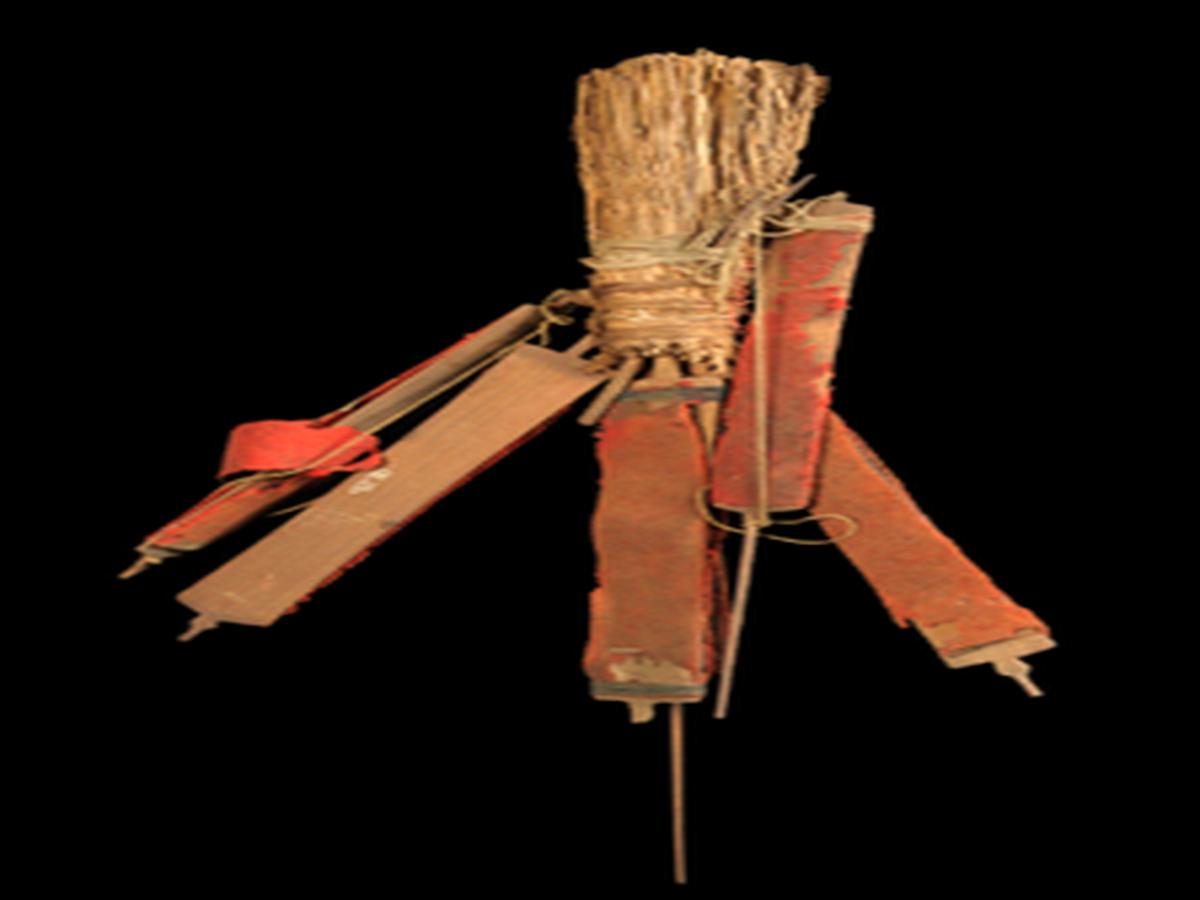State
Tribe Name
Art Type
short description
A headdress is simply a tight bundle of straw and, in its construction, involves a six-stick frame, all of which are very carefully bedecked with red cloth and black thread. The use of natural materials is a reflection of the tribe's closeness to nature as well as their craftsmanship. Red and black are the superlative colors; they are omnipresent in Angami culture, representing perhaps courage, strength, and the warrior spirit. The ceremonial headgear seen in the photographs is representative of the Angami Naga tribe, one of the dominant aboriginal communities of Nagaland in the northeast Indian subcontinent. Angami men, specifically, had an age-old tradition of elaborate attire with symbolic meaning, particularly with respect to headgear, as these would represent the social status and sometimes even the clan affiliation, while also providing pride in their culture.
Thumbnail

Filter Postion
Left
Filter Background
Off
Theme
Filter Header Image

content
Image

description
A headdress is simply a tight bundle of straw and, in its construction, involves a six-stick frame, all of which are very carefully bedecked with red cloth and black thread. The use of natural materials is a reflection of the tribe's closeness to nature as well as their craftsmanship. Red and black are the superlative colors; they are omnipresent in Angami culture, representing perhaps courage, strength, and the warrior spirit. The ceremonial headgear seen in the photographs is representative of the Angami Naga tribe, one of the dominant aboriginal communities of Nagaland in the northeast Indian subcontinent. Angami men, specifically, had an age-old tradition of elaborate attire with symbolic meaning, particularly with respect to headgear, as these would represent the social status and sometimes even the clan affiliation, while also providing pride in their culture.
Such headdresses would generally be worn by men for all major festivals like Sekrenyi, which celebrates purification and new beginnings, during ceremonial dances and performances. A tribal society traditionally uses this kind of headdress to indicate and recognize special achievements or status of the wearer based on the level of his valor or leadership. From its very simple yet meaningful construction emerges the urge to reflect the aesthetic sense and utilitarian values of the Angami culture. All in all, when these various artifacts speak of a time gone by, modernity has begun to creep into the tribal lifestyle. Indeed these artifacts are now the links that preserve indigenous identity, whereof they are frequently found in museums and cultural displays.
Such headdresses would generally be worn by men for all major festivals like Sekrenyi, which celebrates purification and new beginnings, during ceremonial dances and performances. A tribal society traditionally uses this kind of headdress to indicate and recognize special achievements or status of the wearer based on the level of his valor or leadership. From its very simple yet meaningful construction emerges the urge to reflect the aesthetic sense and utilitarian values of the Angami culture. All in all, when these various artifacts speak of a time gone by, modernity has begun to creep into the tribal lifestyle. Indeed these artifacts are now the links that preserve indigenous identity, whereof they are frequently found in museums and cultural displays.
Image Mode
landscape
promoted
On
Verified
Off
